Handmade Ridges
The ridge tile covers the apex of the roof and can come in a range of different shapes. By using different ridge profiles, the apex of a roof can be given a sharp or soft outline. The most commonly used is the half round ridge and a similar soft appearance is obtained with a hog back ridge. An angle ridge provides a sharp apex and this in turn can be broken up by using capped angle ridges or a special ornamental profile. All our ridges are handmade at our Works in the Brierley Hill.
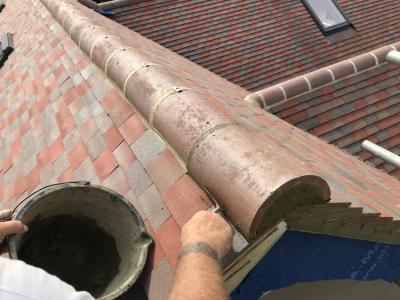
Clay ridge tiles are not limited to use on a clay roof and are often used to finish off a slate roof, either in a Staffordshire blue colour to tone in with the slate or in a contrasting colour such as red or brown.
The New European Standard BS EN 5534 requires all ridge tiles (and ridge tiles used down the hips) to be mechanically fixed. The Tileline dryfix ridge system, the Tileline combination dryfix ridge system and the tileline ridgeroll system all allow for mechanical fixing of ridge tiles whilst providing ventilation in the roof (click here for more info). A traditional fix where ridge tiles are bedded in the normal way but a cleat and screw are used between the ridged tiles to create a mechanical fixing before the mortar "goes off", gives a traditional appearance of a normally bedded roof but does not provide any ventilation (though this can be provided elsewhere on the roof with tile vents).
All Ridges at 300mm, just Angle ridge and Capped Angle ridge available in both 300mm and 450mm.
Dreadnought also manufacture a wide range of ornamental ridges.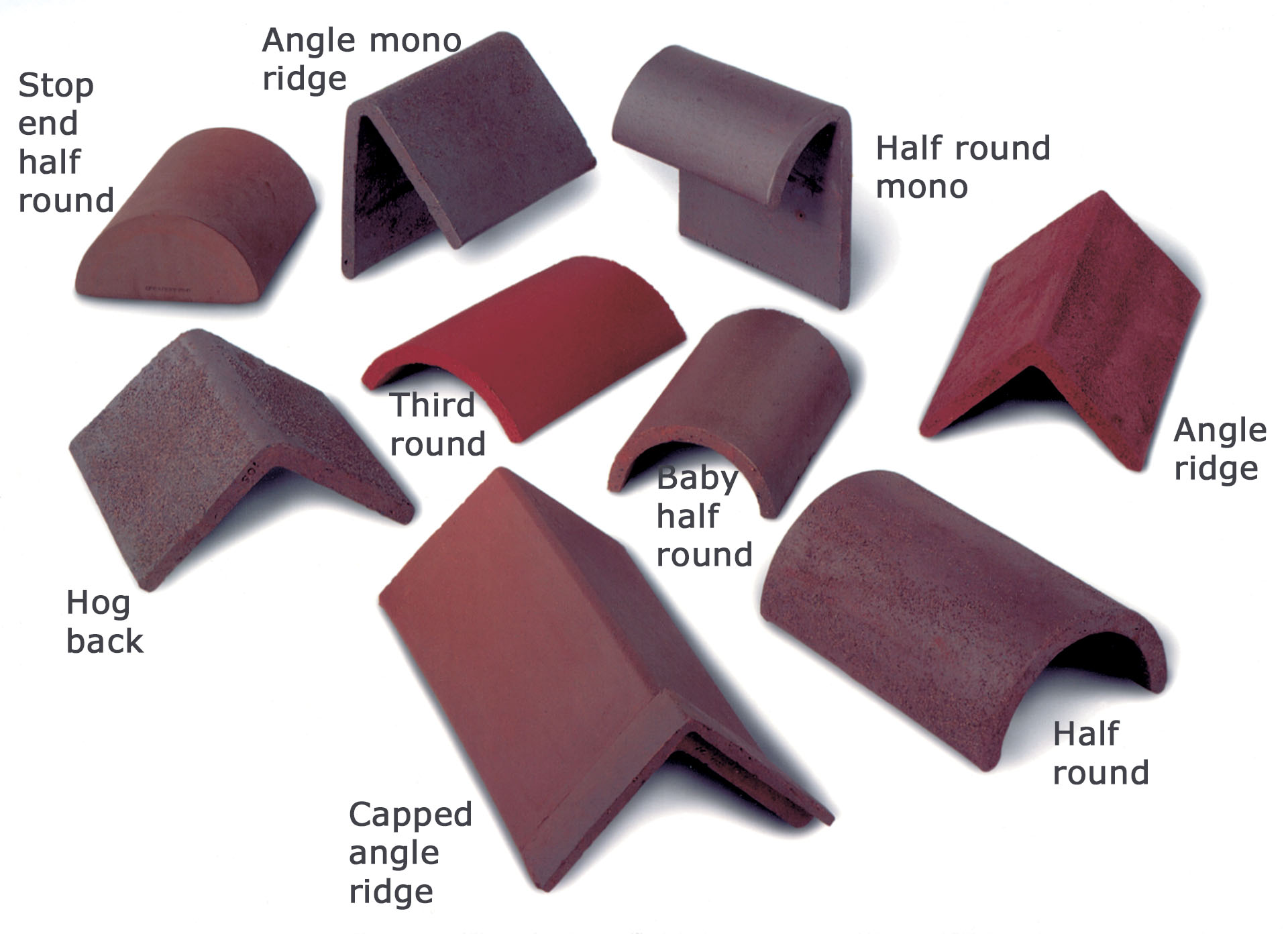
300mm/450mm Angle Ridge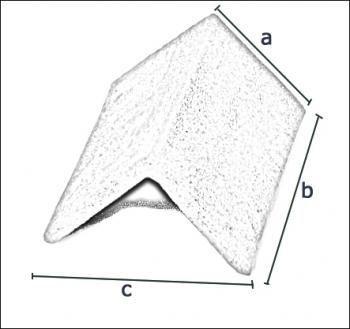
| Angle | a | b | c |
| 75o | 190 | 300/450 | 240 |
| 90o | 185 | 300/450 | 255 |
| 105o | 175 | 300/450 | 270 |
| 115o | 180 | 300/450 | 290 |
An angle ridge gives a sharp profile to the roofline.
Angle Mono Ridge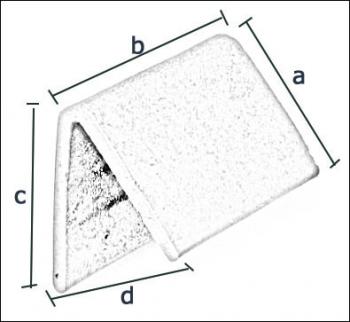
| Angle | a | b | c | d |
| 45o | 215 | 300 | 250 | 210 |
Mono ridges are used where the roof slopes in one direction only, and meets at the top of the slope with a vertical wall
300 or 450mm Capped Angle Ridge 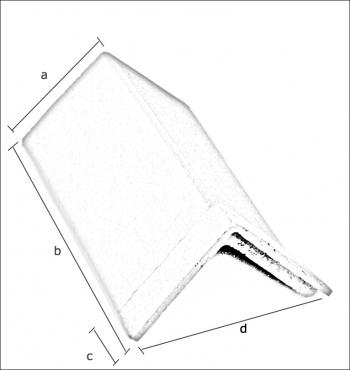
|
Similar to the angle ridge, but with an interlocking cap so there is no visible "joint". This has implications for the ventilation of the roof if using the Tileline ridgeroll system which requires a 10mm space between each ridge tile. However, capped angle ridges can be used with the Tileline dryfix system which uses plastic rails underneath the ridge tiles to allow for ventilation. You can find out more info here Dreadnought Roof Tiles - Ventilation solutions
Hogback Ridge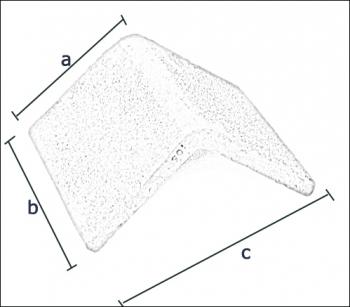
| Angle | a | b | c |
| 90o | 180 | 300 | 265 |
| 105o | 190 | 300 | 300 |
|
|
The Hogsback ridge provides a softer profile to the roof apex than the angle ridge.
Half Round Ridge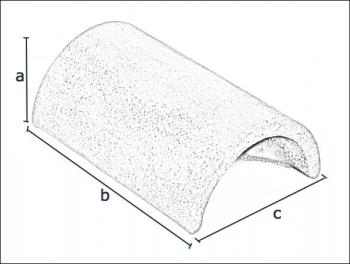
| a | b | c |
| 115 | 300 | 220 |
The Half Round ridge provides a soft finish to the roof apex and is not pitch specific.
Half Round Mono Ridge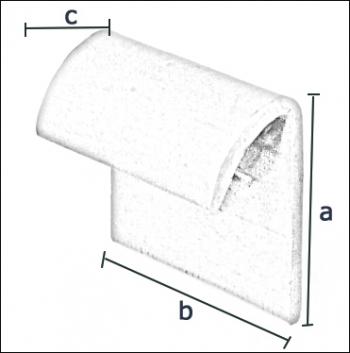
| a | b | c |
| 270 | 300 | 135 |
Often used on lower level roofs like porches where there is just one single roof slope intersecting with a vertical wall
Stop End Half Round Ridge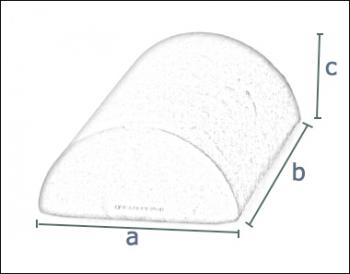
| a | b | c |
| 220 | 300 | 115 |
All the Dreadnought ridges can be neatly finished off with a Stop End.
Baby Half Round Ridge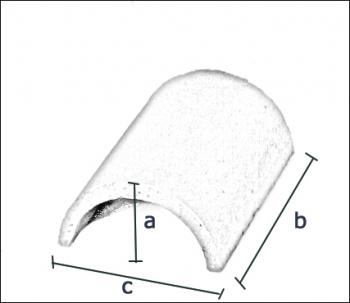
| a | b | c |
| 110 | 300 | 190 |
As the name suggests, this ridge tile is smaller than the Half Round Ridge and is often used on lower level roofs such as porches or canopies. It can also be used as a hip.
Third Round Ridge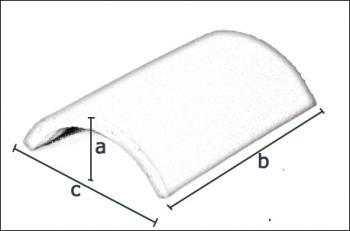
| a | b | c |
| 85 | 300 | 240 |
Where 2 roofs of different pitches intersect, its not possible to use Dreadnought hips, and a third round ridge provides a tidy solution.
Please note: Clay is a natural material and all our products are subject to dimensional tolerances. These dimensions are approximate and typical of the product but should not be taken as a guarantee of characteristics.

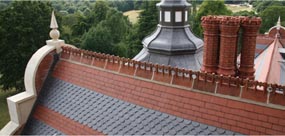
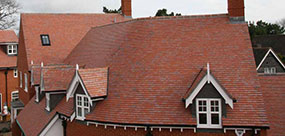
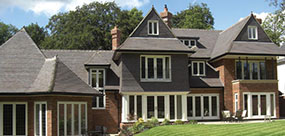



-A.jpg)


